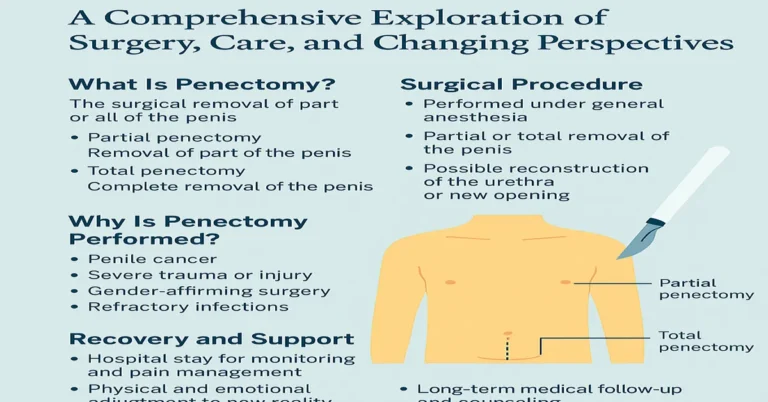Isosorbidmononitrat: The Evolving Pill at the Heart of Modern Cardiovascular Care
In the quiet corridors of cardiology, far from the front pages of tech or politics, an older drug is experiencing a quiet resurgence—reimagined by new data, global guidelines, and a changing patient landscape. Isosorbidmononitrat, long a staple in European pharmacology, is being re-evaluated not as a relic of past cardiology, but as a refined instrument for personalized vascular management.
This medication—known internationally as isosorbide mononitrate—has been used for decades to prevent angina, alleviate chronic heart failure symptoms, and manage vascular stress. But now, thanks to recent clinical reevaluations and tailored dosing technologies, Isosorbidmononitrat is emerging as a vital tool in the precision treatment of ischemic heart disease—especially among aging populations and patients in developing nations.
This is the story of a pill that has survived not by innovation alone, but by adaptability, reliability, and necessity.
The Molecular Backbone: What Is Isosorbidmononitrat?
Isosorbidmononitrat is a vasodilator from the nitrate class, derived from isosorbide dinitrate. It works by releasing nitric oxide (NO), a powerful endothelium-derived relaxing factor that causes smooth muscle relaxation in blood vessels, primarily veins and coronary arteries. This vasodilation reduces myocardial oxygen demand, relieving angina (chest pain) and improving cardiac efficiency.
Unlike its predecessor, isosorbide dinitrate, which has multiple active metabolites and a more complex kinetic profile, Isosorbidmononitrat is a mononitrate form, with more predictable absorption, longer half-life, and once-daily dosing convenience.
In layman’s terms: It widens blood vessels gently, safely, and steadily—especially important for patients with stable angina, chronic heart failure, or those recovering from cardiac events.
A Medication Born in the Shadows of Epidemics
First synthesized in the 1970s in Europe, Isosorbidmononitrat found its initial niche among patients with angina pectoris, a common symptom of coronary artery disease. Back then, cardiac care was dominated by high-risk, reactive strategies. Nitrates offered something radical: prevention.
It became particularly popular in Germany, where its utility was reflected not only in clinical protocols but in the very language of health literacy. In Germany and Austria today, the term “Isosorbidmononitrat” is as familiar to some elderly patients as aspirin or ibuprofen.
But as newer medications like beta-blockers, calcium channel blockers, and ACE inhibitors entered the picture, Isosorbidmononitrat gradually slipped out of headlines—though never out of practice.
Read: From Passion to Profession: How Jeinz Macias Redefined Success
The 2020s Resurgence: Why Is It Back in the Conversation?
Over the past five years, something unexpected happened. Global health trends realigned with the specific benefits of Isosorbidmononitrat:
- Aging populations in Europe and Asia mean more chronic ischemic disease, requiring long-term vascular management.
- Healthcare inequality in developing nations fuels demand for low-cost, effective, off-patent cardiovascular drugs.
- Research on endothelial dysfunction has renewed focus on drugs that support nitric oxide pathways.
- Polypharmacy concerns in geriatric medicine have made once-daily, low-side-effect drugs more appealing.
Dr. Elisabeth Kern, a cardiologist at University Hospital Frankfurt, puts it bluntly:
“In an era of high-tech stents and robotic surgeries, Isosorbidmononitrat reminds us that not all problems require steel. Some still respond to chemistry.”
How It Works in Practice: The Clinical Picture
Isosorbidmononitrat is typically prescribed in doses ranging from 20 to 60 mg per day, often in a controlled-release formulation. Its long half-life allows for once-daily dosing, minimizing patient burden and maximizing adherence.
Common indications include:
- Stable exertional angina
- Secondary prevention after myocardial infarction
- Adjunctive therapy in heart failure (especially with HFrEF)
- Pulmonary hypertension (off-label in some settings)
It is particularly effective in patients with predictable exertional chest pain, where timed administration before daily activity can preempt anginal episodes.
However, it is not used for acute attacks, and physicians often pair it with short-acting nitroglycerin for breakthrough symptoms.
Pharmacokinetics: Precision in a Pill
The bioavailability of Isosorbidmononitrat is high—nearly 100% orally, with peak plasma concentration achieved in 30 to 60 minutes (immediate-release) or 4–6 hours (controlled-release). It does not undergo first-pass hepatic metabolism, unlike its dinitrate precursor.
This reliability makes it ideal for predictable cardiovascular planning, especially for elderly patients with consistent symptom patterns.
Its elimination half-life—ranging between 5 and 7 hours—allows it to maintain efficacy while minimizing tolerance buildup, a common concern in nitrate therapy.
Tolerance and Nitrate-Free Intervals: A Known Challenge
One clinical challenge with all nitrates is tolerance—a diminishing response when used continuously without breaks. This phenomenon, known as nitrate tolerance, occurs due to:
- Depletion of sulfhydryl groups needed for NO production.
- Counter-regulatory sympathetic activity.
- Increased production of oxygen free radicals.
To combat this, physicians recommend nitrate-free intervals—typically 12 to 14 hours without the drug to “reset” sensitivity.
In Germany and Scandinavia, this is often managed by prescribing morning-only dosages and avoiding bedtime use.
Patient Perspectives: The Voice of Experience
At age 72, Hans Müller, a retired train conductor in Munich, credits Isosorbidmononitrat with helping him stay mobile despite a decade-long battle with stable angina.
“My first episode felt like someone sat on my chest. Now, with my morning pill, I walk to the bakery without fear.”
His story mirrors thousands across the continent. Most patients report good tolerance, minimal side effects, and high compliance, especially with extended-release tablets.
Side Effects: Mild But Watchful
Though generally well-tolerated, Isosorbidmononitrat is not without risks. Common side effects include:
- Headache (due to vasodilation)
- Dizziness or orthostatic hypotension
- Flushing
- Reflex tachycardia (rare in mononitrates)
Severe side effects are uncommon but may occur in combination therapy—particularly when paired with phosphodiesterase inhibitors like sildenafil (Viagra), which can cause fatal hypotension.
Patients are universally warned to avoid co-administration of such drugs.
The Economics of a Generic Giant
Because Isosorbidmononitrat is off-patent, it is available as a low-cost generic across most countries. In India and Southeast Asia, it retails for as low as 0.05 USD per tablet, making it a key tool in cardiovascular disease management in low-income settings.
According to a 2024 report by the WHO, Isosorbidmononitrat ranks among the Top 25 Essential Cardiovascular Medications worldwide, second only to aspirin in usage frequency.
Emerging Research: Beyond the Angina Paradigm
Several recent studies suggest that Isosorbidmononitrat may play roles beyond traditional angina:
1. Endothelial Repair
New data shows it may improve endothelial cell regeneration, particularly post-stent placement.
2. Cognitive Circulation
Pilot studies in Germany are exploring whether long-term use improves cerebral perfusion in elderly patients, potentially impacting early-stage vascular dementia.
3. Pulmonary Arterial Hypertension (PAH)
Used off-label in some PAH protocols, especially where advanced medications are unavailable or unaffordable.
Public Health and Accessibility
Isosorbidmononitrat is now part of national formularies in over 70 countries. It’s stocked in:
- Primary care kits in rural India.
- Mobile cardiac units in sub-Saharan Africa.
- Public hospital pharmacies across Latin America.
It’s included in the Essential Medicines List (EML) of the WHO and the European Society of Cardiology’s 2024 updated guidelines.
Digital Health and Dosing Tech
A growing number of patients are now using digital pillboxes, smart dispensers, and mobile reminders to time their nitrate doses, preserving the necessary drug-free intervals and enhancing compliance.
Companies like MediByte and MyRxTime have created apps specifically designed to support long-term users of drugs like Isosorbidmononitrat.
Where Is It Headed Next?
In 2025 and beyond, several trends are shaping the future of Isosorbidmononitrat:
- Custom-release capsules: Controlled delivery with adjustable nitrate-free intervals.
- Combination therapy trials: Pairing with statins and SGLT2 inhibitors in heart failure patients.
- Blockchain-based prescriptions: Secure, cross-border refill networks in Europe and South Asia.
- AI-powered adherence coaching: Using wearables and biometric tracking.
Final Thoughts: An Old Drug in a New Era
Isosorbidmononitrat is not new. But its relevance is. In a landscape dominated by breakthrough biologics and million-dollar gene therapies, its quiet efficiency and accessibility are more radical than they appear.
In a world where heart disease remains the number one killer—rich and poor alike—it reminds us that sometimes, progress isn’t a revolution. It’s a refined return to what works.
Reliable. Predictable. Potent. And profoundly human.


